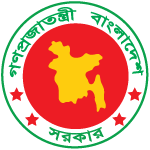Surveillance
Wet Market Surveillance Overview
Wet Market Surveillance
Wet Market Surveillance-2009
Wet Market Surveillance-2010
Hospital Based Rotavirus & Intussusception Surveillance (HBRIS)
IEDCR in collaboration with icddr,b has started hospital based Rotavirus & Intussusception surveillance in three selected hospitals across the country from July 2012. The objectives of this surveillance are to estimate the proportion of diarrhea hospitalization among children less than 5 years of age, which are attributable to rotavirus, to describe the predominant strain of rotavirus throughout Bangladesh, to determine the age, region and seasonal distribution of hospitalizations associated with rotavirus in the population under surveillance and to estimate the frequency of hospitalization associated with intussusception among children less than 2 years of age in surveillance hospitals. According to case definition data and samples are collected from the hospitals and sent to central level for analysis and laboratory test on a periodic basis. The results will be shared with all the study collaborators and stakeholders.
- HBRIS monthly report, April 2016
- HBRIS monthly report, March 2016
- HBRIS monthly report, February 2016
- HBRIS monthly report, January 2016
- HBRIS monthly report, December 2015
- HBRIS monthly report, November 2015
- HBRIS monthly report, October 2015
- HBRIS monthly report, September 2015
- HBRIS monthly report, August 2015
- HBRIS monthly report, July 2015
- HBRIS monthly report, June 2015
- HBRIS monthly report, May 2015
- HBRIS monthly report, April 2015
- HBRIS monthly report, March 2015
- HBRIS monthly report, February 2015
- HBRIS monthly report, January 2015
- HBRIS monthly report, December 2014
- HBRIS monthly report, November 2014
- HBRIS monthly report, October 2014
- HBRIS monthly report, September 2014
- HBRIS monthly report, August 2014
- HBRIS monthly report, July 2014
- HBRIS monthly report, June 2014
- HBRIS monthly report, May 2014
- HBRIS monthly report, April 2014
- HBRIS monthly report, March 2014
- HBRIS monthly report, February 2014
- HBRIS monthly report, January 2014
- HBRIS monthly report, December 2013
- HBRIS monthly report, November 2013
- HBRIS monthly report, October 2013
- HBRIS monthly report, September 2013
- HBRIS monthly report, August 2013
- HBRIS monthly report, July 2013
- HBRIS monthly report, June 2013
- HBRIS monthly report, May 2013
- HBRIS monthly report, April 2013
- HBRIS monthly report, March 2013
- HBRIS monthly report, February 2013
- HBRIS monthly report, January 2013
- HBRIS monthly report, December 2012
- HBRIS monthly report, November 2012
- HBRIS monthly report, October 2012
- HBRIS monthly report, September 2012
- HBRIS monthly report, August 2012
- HBRIS monthly report, July 2012
Priority communicable disease surveillance (PCDS)
Acute meningo-encephalitis surveillance (AMES)
Acute Meningo-Encephalitis Surveillance (AMES) started in Bangladesh with the objectives of expanding the ongoing vaccine-preventable diseases surveillance to include Meningo-encephalitis, strengthening national capacity to detect important causes of Meningo-encephalitis and estimating incidence of vaccine-preventable causes of Meningo-encephalitis to provide vaccination in future. AMES started from October 2007 in collaboration with the partner organizations. Rajshahi, Khulna and Chittagong medical college hospitals were selected initially for the study. The meningo-encephalitis diseases selected for reporting under this surveillance are: (1) Japanese Encephalitis, (2) Nipah, (3) Dengue, (4) Other bacterial causes of encephalitis. The concerned surveillance physicians, Directors and Superintendants of the selected hospitals are responsible for conducting the surveillance locally and sending the reports bi-weekly.
Sentinel surveillance (SS)
Institutional disease surveillance (IDS)
It was started with the objective of developing disease profiles for each institution for future planning of distribution of logistics and manpower. It covers all the medical college hospitals and specialized institutes in Bangladesh. The diseases selected for reporting were both communicable and non-communicable diseases. Besides the above mentioned seven priority communicable diseases, all the diseases reported at outpatient department (OPD) and inpatient department (IPD) were selected for reporting. Priority communicable diseases were scheduled for reporting on a weekly basis and the other disease profiles on a monthly basis. Directors and Superintendants of the hospitals and institutes are responsible for conducting this surveillance locally.

